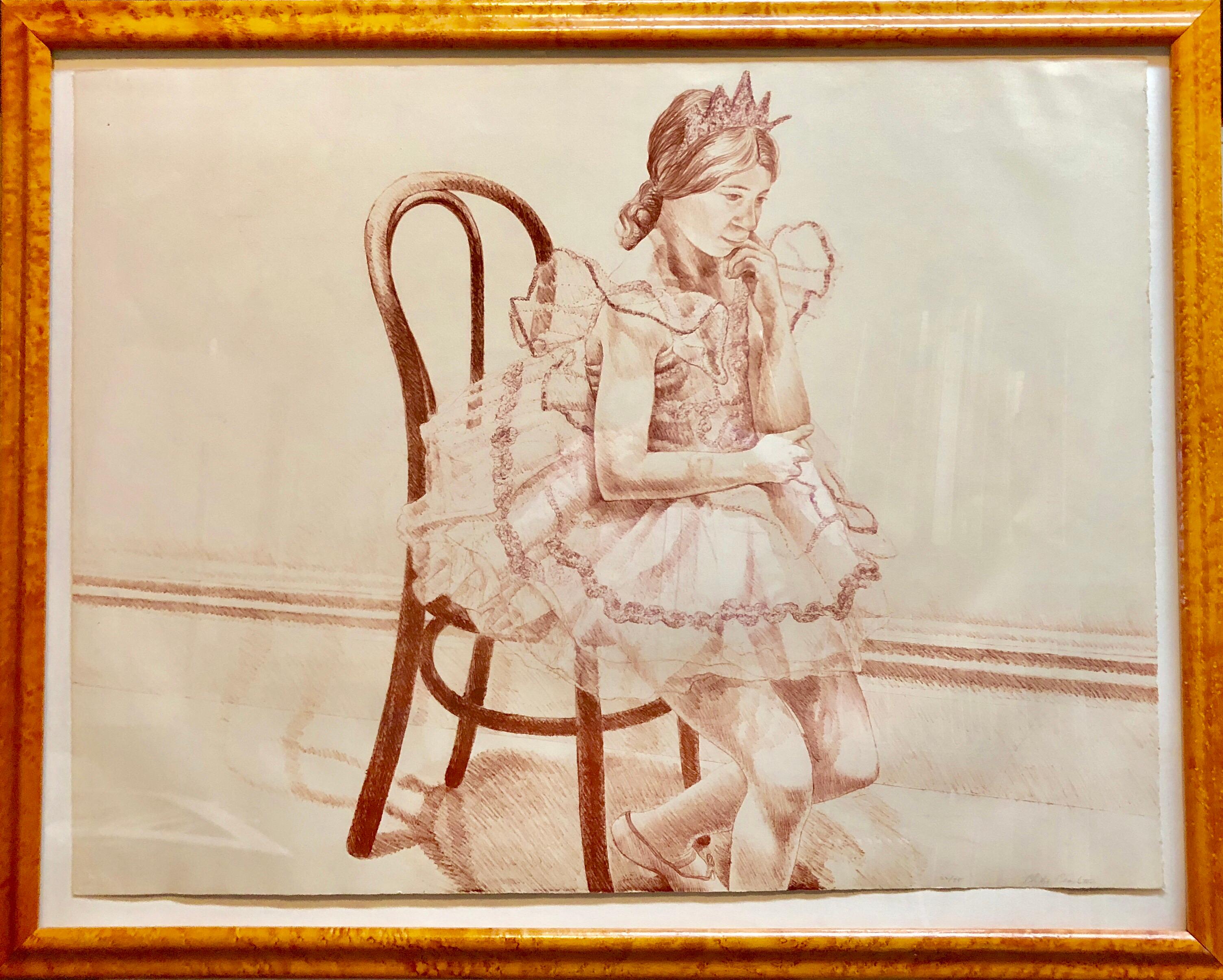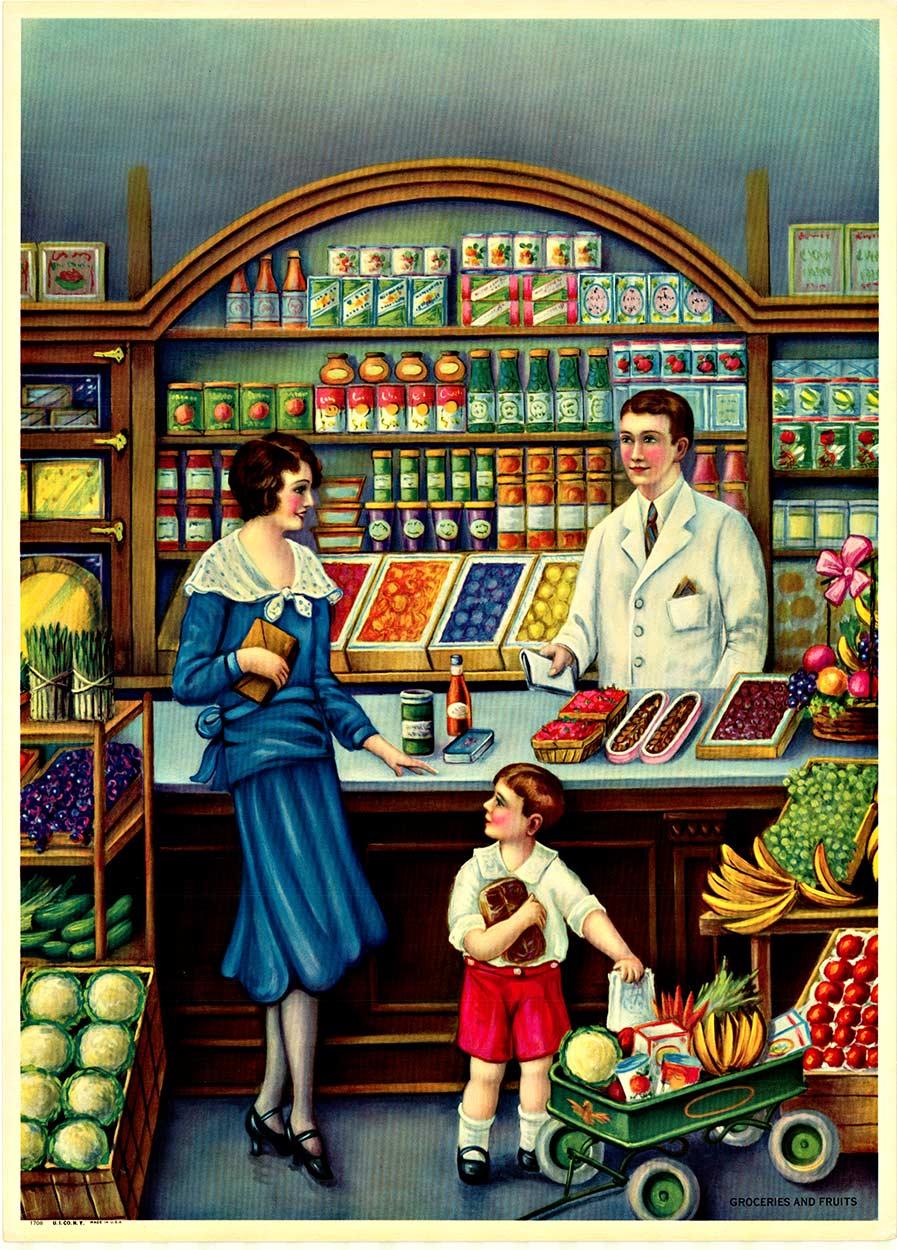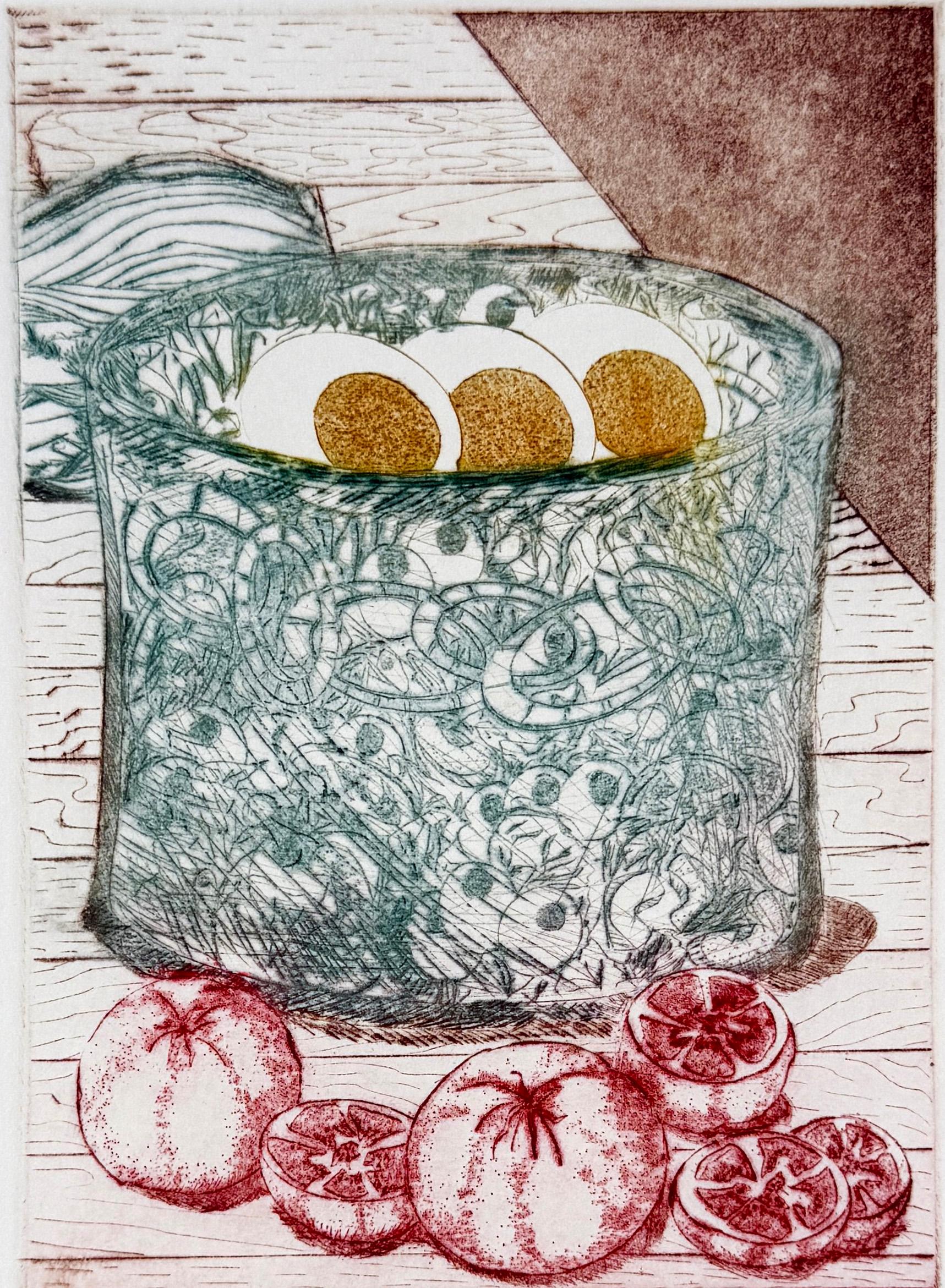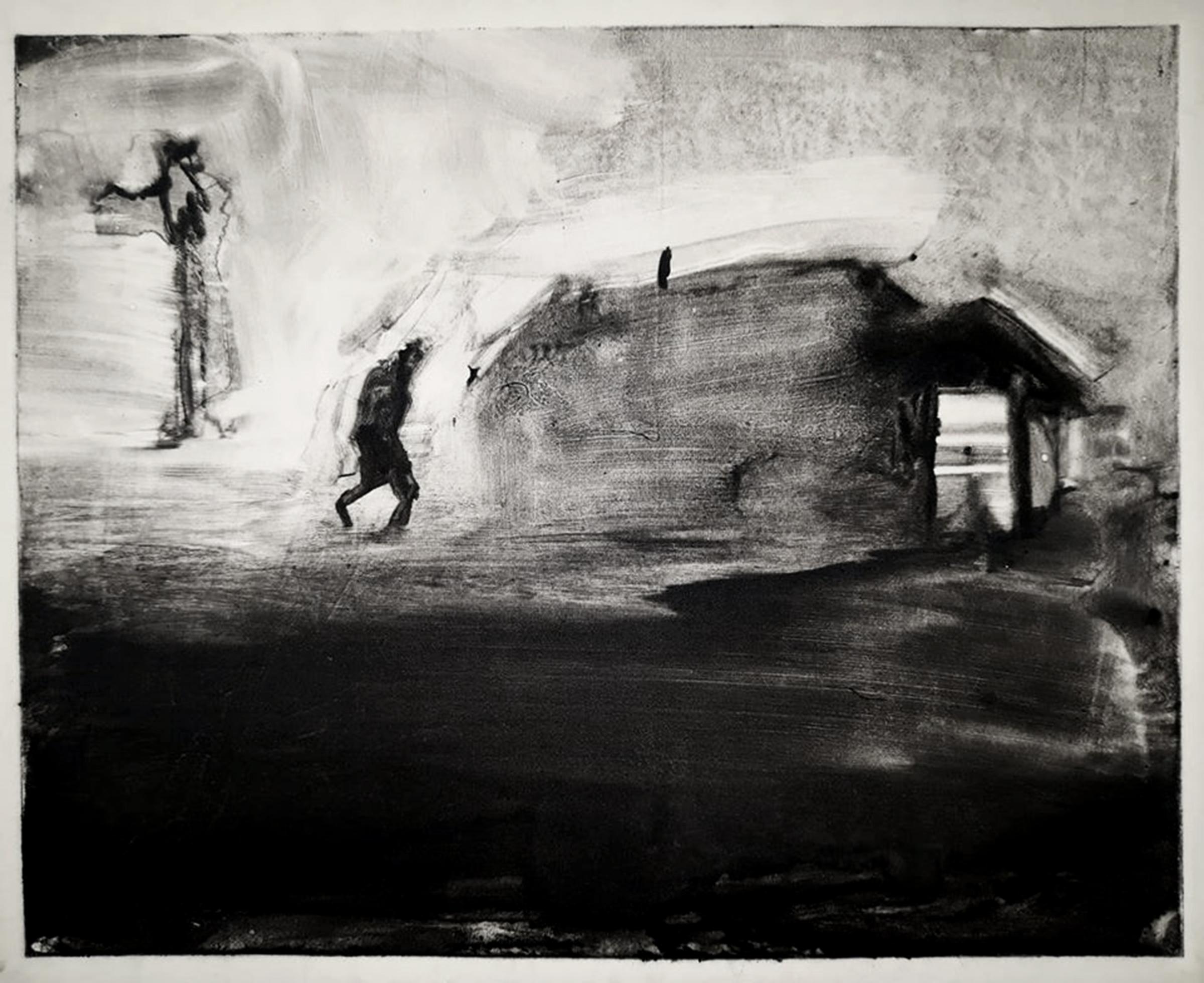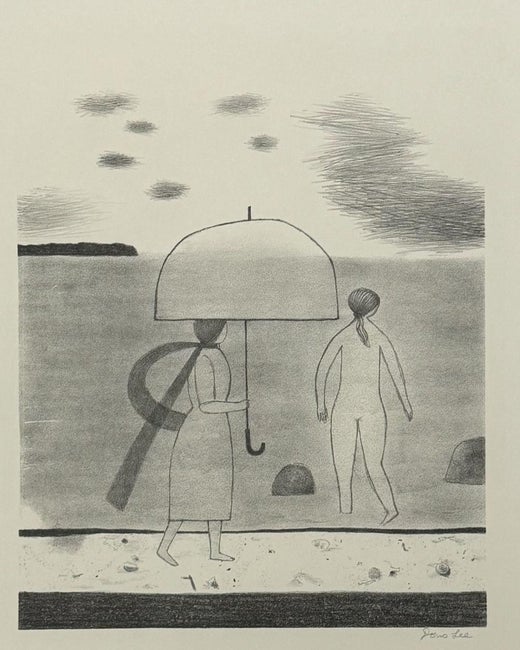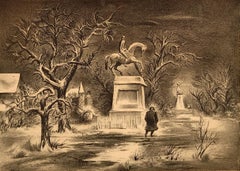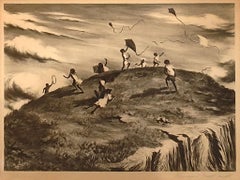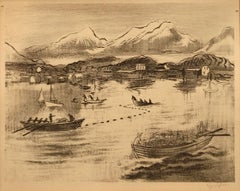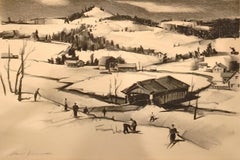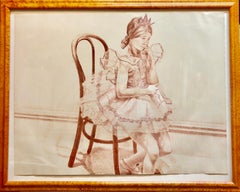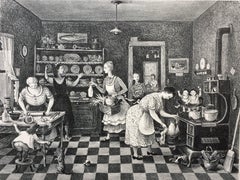
"Thanksgiving" Doris Lee, Family Genre Scene Interior, Americana, WPA, Woodstock
View Similar Items
Doris Lee"Thanksgiving" Doris Lee, Family Genre Scene Interior, Americana, WPA, Woodstock1942
1942
About the Item
- Creator:Doris Lee (1905 - 1983)
- Creation Year:1942
- Dimensions:Height: 16 in (40.64 cm)Width: 20 in (50.8 cm)
- Medium:
- Movement & Style:
- Period:
- Condition:
- Gallery Location:New York, NY
- Reference Number:1stDibs: LU1841214164982
Doris Lee
Doris Lee, born in Aledo, Illinois, was one of the most successful artists of the depression era. Lee studied at the Kansas City Art Institute with the noted American impressionist Ernest Lawson. She also studied in Paris with the influential cubist painter Andre Lhote and at the California School of Fine Arts, San Francisco, with Arnold Blanch, whom she later married. In 1931, Lee moved permanently to Woodstock, New York and established herself as a leader in an important artist colony. The town’s proximity to New York City guaranteed a regular flow of artists between the colony and the metropolis, keeping in touch with current development in the arts. The Art Students League of New York helped to create that flow when it established a summer school in Woodstock in 1906 that brought hundreds of art students into the town each summer. The 1930s marked the beginning of a long and productive career for Doris Lee. Her work included easel paintings, murals, prints and illustrations, as well as costume, textile and ceramic design. Lee’s work from this period was concerned with life in rural America, and in a stylistic and ideological sense, had much in common with regionalism. Lee portrayed the simple joys of American life in touching, nostalgic and sometimes fanciful ways. Lee’s work was exhibited in the first Whitney Biennial exhibition in 1931. Her earliest major career achievement came in 1935 when she was awarded the Logan Prize for her painting Thanksgiving from the Art Institute of Chicago. Shortly after the Logan Prize, Lee was awarded two commissions by the U.S. Department of the Treasury for murals of the Washington, D.C. Post Office Building. An additional boost to the artist’s fame and prestige came in 1937 with the purchase of her painting ‘Catastrophe’ by the Metropolitan Museum of Art. From 1936–39, Lee was invited to be a summer guest artist at the Colorado Springs Fine Art Center. The 1930s finished with a flourish when Lee was invited to exhibit in the 1939 New York World’s Fair. This early support given to Lee by the museums and the art establishment was an impressive accomplishment for a young woman struggling for acceptance in the male-dominated art world of the time.
Starting in the late 1930s, Lee and her husband, Arnold Blanch, began to spend their winters in Key West, Florida. During the winters of the 1940s through the 1960s, Lee painted her unique Florida subjects: fishermen, bathers, beaches, mangrove swamps and Florida’s plant and wildlife. Lee combined the sophistication of her knowledge of pure abstraction with her love of American folk art to create her unique style. In the 1940s, Lee’s work became more stylized, more concerned with pure form and color. Her simple, flat paintings portrayed gardens, seasonal landscapes and women and children, as well as birds and other beasts. In 1943 and 1944, Lee was the guest artist at Michigan State College in Lansing, Michigan. She received many painting assignments from Life magazine during these years. She was awarded the prestigious Carnegie Prize in 1944 and was included in the 15 of the annual juried exhibition at Pennsylvania Academy of the Fine Arts.
Lee worked in Hollywood, California and Hawaii during the winter months of 1945. She toured Central America in 1946 and went to North Africa in 1951. During the 1950s until the end of the 1960s, Lee’s dealers have Associated American Artists Gallery and World House Galleries in New York City and the Rudolf Gallery in Woodstock. She participated in both one-man and group exhibitions with these dealers. Her paintings from this period are characterized by a bold move to pure abstraction. They are richly colored and geometric in design, with realistic references still discernible. Lee produced a significant body of abstract work during the 1960s. In these paintings, she combined her knowledge of international style, her interest in American folk art and her early training with Andre Lhote in abstract painting. The works celebrate Lee’s private experience of the world and synthesize her personal and emotional response to her subject matter. To engage the viewer’s entire field of vision, Lee used broad expanses of color, often geometrically organized. During this period, Lee experimented with black and white, biomorphic shapes and calligraphic brushwork. The late work is painterly yet contains the subtle, wry humor of her earlier work. Doris Lee retired from painting at the end of the 1960s. She died in Clearwater, Florida, in 1983.
More From This Seller
View All1940s American Realist Figurative Prints
Lithograph, Paper
1940s American Realist Figurative Prints
Lithograph, Paper
1940s American Realist Landscape Prints
Paper, Lithograph
1950s American Realist Figurative Prints
Paper, Lithograph
1930s Modern Figurative Prints
Lithograph
1930s Modern Figurative Prints
Lithograph
You May Also Like
1970s American Realist Figurative Prints
Lithograph
Late 20th Century American Realist Figurative Prints
Lithograph
Late 20th Century American Realist Figurative Prints
Lithograph
Late 20th Century American Realist Figurative Prints
Lithograph
1920s American Realist Interior Prints
Lithograph
1980s American Realist Interior Prints
Watercolor, Laid Paper, Intaglio
